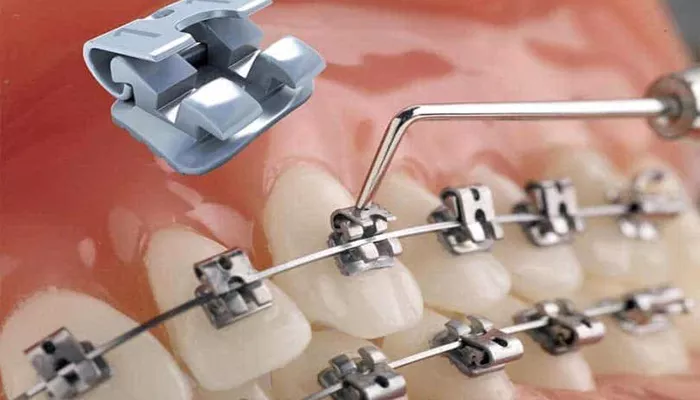Orthodontic treatment can significantly improve dental alignment and overall oral health. However, the journey to a perfect smile often comes with discomfort, especially in the initial stages of wearing braces. One effective way to alleviate this discomfort is through the use of orthodontic wax. This article will explore the types of wax suitable for covering orthodontic brackets, their benefits, and proper application techniques.
What Is Orthodontic Wax?
Orthodontic wax is a specialized product designed to provide relief from the discomfort caused by braces. When braces are first applied or after adjustments, the metal components can rub against the soft tissues of the mouth, leading to irritation and sores. Wax acts as a protective barrier, preventing direct contact between the brackets and the sensitive areas of the mouth.
Types of Orthodontic Wax
There are several types of wax commonly used in orthodontics. Each type has unique properties, making them suitable for different preferences and needs.
1. Paraffin Wax
Paraffin wax is one of the most common types of orthodontic wax. It is derived from petroleum and is known for its smooth texture and ease of application. Paraffin wax is solid at room temperature but softens quickly when warmed by hand. This characteristic makes it easy to mold and apply to brackets and wires.
Advantages:
Easy to Use: Paraffin wax can be easily shaped and applied.
Non-Toxic: It is safe to use in the mouth and does not pose health risks if swallowed accidentally.
Cost-Effective: Generally, paraffin wax is affordable and widely available.
2. Beeswax
Beeswax is a natural wax produced by honeybees. It is often favored by individuals looking for a more organic option.
Beeswax has a slightly tacky texture, which helps it adhere well to braces.
SEE ALSO: How to Remove Orthodontic Brackets
Advantages:
Natural Composition: Ideal for those who prefer natural products.
Good Adhesion: Sticks well to brackets, providing effective protection.
Antimicrobial Properties: Beeswax has natural antibacterial properties that can help reduce the risk of infections in sore areas.
3. Carnauba Wax
Carnauba wax is derived from the leaves of the Brazilian palm tree. It is known for its hardness and high melting point, making it less sticky than paraffin or beeswax. Carnauba wax is often blended with other waxes to enhance its properties.
Advantages:
Durability: It lasts longer than other types of wax and provides extended protection.
Non-Allergenic: Generally safe for individuals with allergies to other wax types.
Glossy Finish: Offers a smoother finish, which some users may prefer.
Benefits of Using Orthodontic Wax
Using orthodontic wax provides several benefits, particularly for individuals who are new to braces or experiencing discomfort after adjustments.
1. Pain Relief
The primary benefit of orthodontic wax is its ability to relieve pain and discomfort. By covering sharp edges of brackets and wires, wax prevents irritation to the soft tissues of the mouth, allowing sores to heal.
2. Protection
Wax serves as a barrier between the braces and the oral tissues. This protection is crucial during the initial adjustment period when the mouth is not yet accustomed to the braces.
3. Temporary Fix for Loose Brackets
If a bracket becomes loose or a wire protrudes, orthodontic wax can temporarily hold it in place until a visit to the orthodontist can be scheduled. This can prevent further discomfort and potential damage to the mouth.
4. Increased Comfort
By reducing friction and irritation, orthodontic wax can significantly improve the overall comfort of wearing braces. This is especially beneficial for individuals who may be sensitive to the pressure of braces.
How to Apply Orthodontic Wax
Proper application of orthodontic wax is essential for maximizing its benefits. Here is a step-by-step guide on how to apply wax effectively:
Step 1: Prepare Your Mouth
Before applying wax, ensure that your mouth is clean. Brush your teeth thoroughly to remove any food particles, and rinse your mouth with water. This step helps prevent bacteria from being trapped under the wax.
Step 2: Wash Your Hands
Always wash your hands before handling orthodontic wax. This practice minimizes the risk of introducing bacteria into your mouth.
Step 3: Dry the Affected Area
Using a tissue or cloth, gently dry the area of your braces where you plan to apply the wax. A dry surface allows the wax to adhere better.
Step 4: Take a Small Amount of Wax
Pinch off a small piece of wax, about the size of a pea. If the wax is too hard, warm it slightly between your fingers until it softens.
Step 5: Shape the Wax
Roll the wax into a small ball or flatten it slightly, depending on your preference. The goal is to create a shape that will effectively cover the troublesome bracket or wire.
Step 6: Apply the Wax
Carefully place the wax over the sharp or uncomfortable area of the braces. Press it gently to ensure it adheres well.
If necessary, use your tongue to adjust the position of the wax.
Step 7: Replace as Needed
Orthodontic wax can be worn for several hours but should be replaced if it becomes dislodged or dirty. It is advisable to remove the wax while eating or drinking to prevent it from trapping food particles.
Conclusion
Orthodontic wax is an invaluable tool for anyone undergoing braces treatment. It provides pain relief, protection, and comfort, making the orthodontic journey more manageable. With various types of wax available, individuals can choose the option that best suits their needs. Proper application and maintenance of orthodontic wax can significantly enhance the overall experience of wearing braces, allowing patients to focus on their path to a beautiful, healthy smile.

